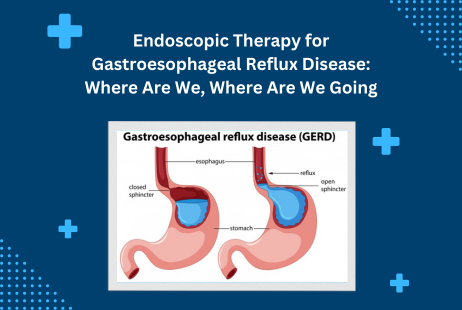
Introduction
Gastroesophageal reflux disease (GERD) is a persistent condition that can profoundly impact patients’ quality of life. It manifests with typical symptoms like heartburn, regurgitation, and bloating, as well as atypical symptoms such as cough, hoarseness, and difficulty breathing. The prevalence of GERD varies across regions but has been on the rise globally.
A systematic analysis of population-based studies has revealed varying rates of GERD prevalence:
15 – 20% world wide.
While lifestyle adjustments and medical therapy are the initial approaches for managing GERD, proton pump inhibitors (PPIs) are the primary medications.
However, a significant portion of individuals with chronic GERD do not respond well to medical therapy, and some patients, even though suitable for long-term medical treatment, are hesitant to pursue it due to side effects of medications. On the other hand, antireflux surgery (ARS) has demonstrated effectiveness in patients with chronic or refractory GERD. Still, it is a more invasive option associated with long-term side effects like dysphagia, excessive flatulence, and bloating.
Endoscopic minimally invasive therapies for GERD have emerged as a promising middle ground, bridging the gap between medical treatment and invasive surgery. Over the years, mounting evidence regarding the safety and effectiveness of endoscopic therapy has led to its inclusion in the latest guideline recommendations alongside ARS. This review aims to provide an overview of the current landscape of endoscopic GERD therapies and shed light on future directions. Figure 1 offers an overview of the endoscopic therapies discussed in this review.
The Growing Prevalence of GERD
GERD is characterized by symptoms such as heartburn, regurgitation, and bloating, which can significantly disrupt daily life. The prevalence of GERD has been steadily increasing, with rates varying across different regions. Lifestyle modifications and proton pump inhibitors (PPIs) have traditionally been the first-line treatments, but not all patients respond adequately to these approaches.
Endoscopic Therapy: Bridging the Gap
Endoscopic therapies have emerged as a promising middle ground between medical treatments and invasive surgery for GERD. These minimally invasive procedures offer new hope to patients who don’t find relief through medication or prefer to avoid more extensive surgical interventions. Let’s explore some of these innovative endoscopic treatments.
Transoral Incisionless Fundoplication (TIF)
TIF is a minimally invasive procedure that mimics surgical fundoplication without the need for incisions. It involves folding the gastric fundus around the lower esophagus, creating a 270–300° fundoplication. TIF has demonstrated its effectiveness in improving GERD symptoms, decreasing the use of PPIs, and enhancing patients’ quality of life. Adverse events are generally low, making it a safe option for select GERD patients.
The Future of Transoral Incisionless Fundoplication (TIF)
TIF is not limited to primary GERD treatment. It is being explored for GERD after per-oral endoscopic myotomy (POEM), addressing atypical GERD symptoms, and even in patients with obesity undergoing laparoscopic sleeve gastrectomy (LSG). Furthermore, TIF can be considered for patients with impaired esophageal motility, expanding its potential applications.
Radiofrequency Antireflux Procedure (Stretta)
Stretta employs radiofrequency energy to treat GERD. While effectiveness findings have been mixed, it is considered safe and relatively easy to perform. Stretta doesn’t alter surgical anatomy significantly, allowing for subsequent procedures if needed. However, current guidelines favor fundoplication over Stretta for adult GERD patients.
Exploring Stretta’s Potential
Research is ongoing to determine the viability of Stretta for GERD patients post-LSG and those who have experienced failed laparoscopic Nissen fundoplication (LNF). Stretta’s application may be limited to specific patient populations, but ongoing studies may provide more insights.
Endoscopic Suturing and Plication Techniques
Endoscopic suturing and plication techniques have evolved, offering alternatives for patients with altered anatomy who face limited antireflux surgery options. Procedures like Mucosal Ablation and Suturing of EG Junction (MASE) and Resection and Plication (RAP) promise to improve GERD symptoms and reduce PPI usage in these challenging cases.
The Future of GERD Treatment
Endoscopic therapy for GERD is an exciting field that continues to evolve. More patients will benefit from these minimally invasive options as research progresses and techniques improve. Whether it’s TIF, Stretta, or innovative suturing and plication techniques, the future of GERD treatment looks promising.
Endoscopic Therapy for Gastroesophageal Reflux Disease (GERD) with Dr. Girish Juneja
Endoscopic therapy is revolutionizing the management of GERD, offering hope to patients who have long struggled with this chronic condition. As we progress, these procedures will likely become even safer and more effective, catering to a broader population of GERD sufferers.
You can rely on Dr. Girish Juneja for expert care if you are looking for Endoscopic Therapy for Gastroesophageal Reflux Disease (GERD). Dr. Girish is a time-tested surgeon with over 30 years of experience committed to providing patients with best-in-class care.
Book your appointment today!
